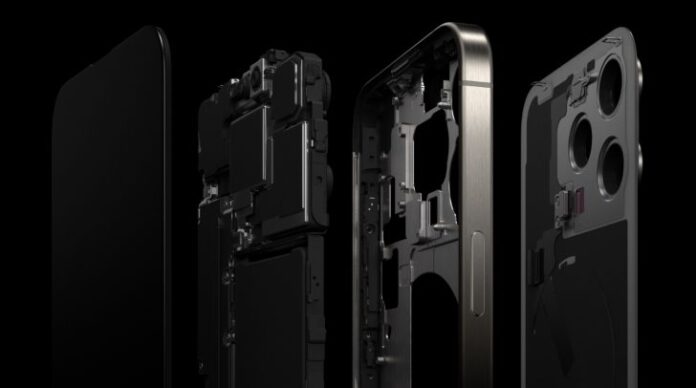
The A17 Pro was taken through its paces in a recent benchmark, and only obtained a mere single-digit gain against the A16 Bionic in Geekbench 6’s multi-core run. The reason for this low score is quite simple; according to the latest findings, the iPhone 15 Pro Max featuring this chipset is unable to keep low temperatures for longer periods, resulting in thermal throttling, and requires a beefy cooling solution to get a high single-threaded and multi-threaded result.
A17 Pro’s 3nm architecture offers no benefits in keeping temperatures low, according to the testing methodology of the iPhone 15 Pro Max
In an updated Geekbench 6 score, the iPhone 15 Pro Max with its A17 Pro got an impressive result of 2,999 and 7,779 in single-core and multi-core, respectively. These results represent a 20 percent increase compared to the A16 Bionic, which led us to believe that the Geekbench application might have been buggy during the time of the first benchmark run.
However, extensive testing done by Chinese content creator Geekerwan revealed that the 6.7-inch flagship suffers from severe thermal throttling issues and requires an external cooling solution with a dedicated fan to perform at its best. These results also reveal that the A17 Pro’s next-generation 3nm architecture does little to alleviate the overheating problems, which can mean one of two things or both.

Either Apple did not give its iPhone 15 Pro Max a robust cooling solution, or TSMC’s 3nm manufacturing process was greatly exaggerated to bring in unparalleled power efficiency improvements. Regardless, Apple’s top-tier handset has surface temperatures of 48 degrees Celcius when running a benchmark, which can become unbearable to hold for some, and even more so if you wish to use the handset for a portable gaming session.
Apple does market its A17 Pro as a gaming powerhouse, with support for hardware-accelerated ray tracing that is four times faster than the A16 Bionic, but that 400 percent improvement will be of little use when the chipset’s temperatures cannot be tamed. We did find evidence that the A17 Pro is just a re-badged version of the A16 Bionic with a slightly varying codename, suggesting that the latest SoC is just an optimized version of its predecessor.
We will continue to publish more findings of Apple’s so-called latest and greatest silicon, but you can check out Geekerwan’s video in the link below and let us know what you think about these results.
WccftechContinue reading/original-link]





